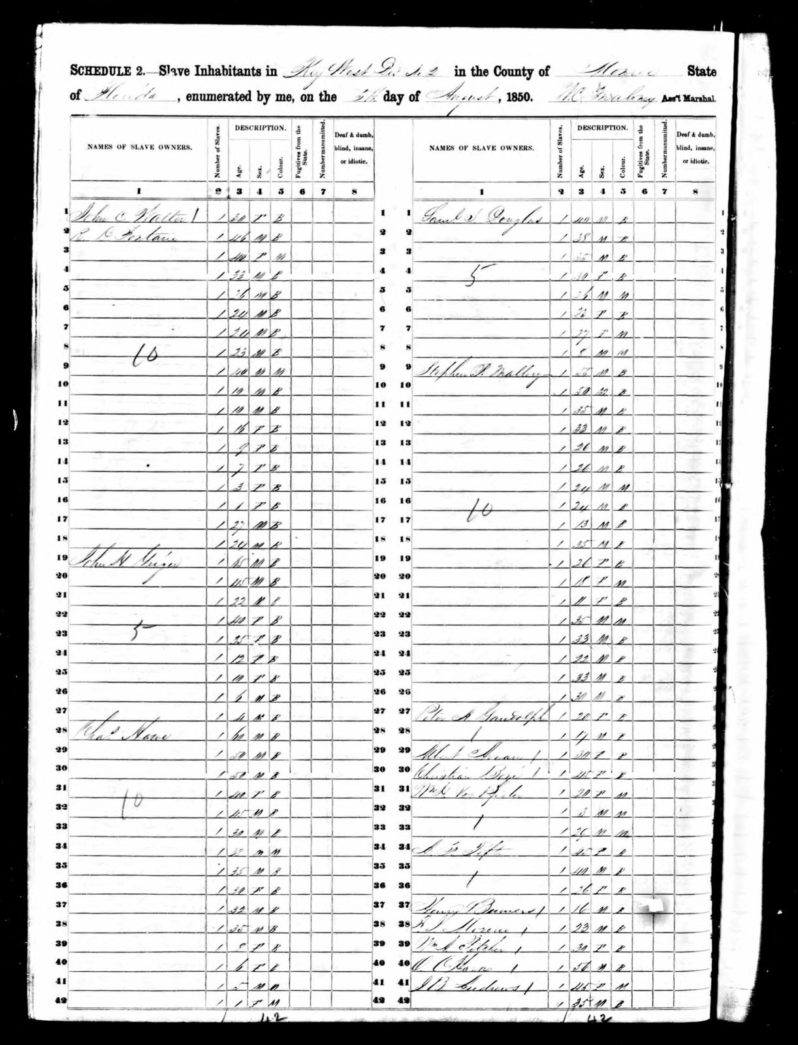
The Beatles fought racism from a Key West motel. (See keysweekly.com for that story.)
You can fight racism, too. While we celebrate Key West as “One Human Family,” we must not forget the island’s history of “un-human family” behavior, lest history repeats itself.
Love Me Do is a weekly feature that invites readers to learn about the past and reflect on how their own actions and attitudes today might be viewed in the future.
Key West’s Mallory Square is a world-famous destination where tourists and locals flock to watch acrobats, artists and tightrope walkers while celebrating the sun as she sinks behind the Gulf of Mexico, ushering in the night. Few revelers are aware that there is a dark history of racism attached to our island’s No. 1 free attraction.
Ellen Mallory settled in Key West in 1823. As the island’s first white female settler, she operated a boarding house for seamen where Mallory Square now stands. People laud her son, Stephen Mallory, as a U.S. Senator, but he also forged a legacy of racism.
According to Tom Hambright, historian at Monroe County Library, Mallory Square was named for both Ellen and Stephen Mallory, as well as the unrelated Clyde Mallory, who operated a steamship line from those docks.
Stephen Mallory became Secretary of the Navy for the Confederate States of America when Florida seceded from the Union in 1861. Before secession, Mallory spoke to the Senate, conveying the rationale of slaveholders in their unwillingness to accept majority rule.
Mallory campaigned for flogging in the Navy. Before becoming a senator, he owned slaves in Key West. He leased those slaves to engineers with the U.S. government to help build Fort Taylor and Fort Jefferson.
An 1808 law banning Congress members from having contracts with the government could have prevented Mallory from becoming a senator. But he worked his way around that problem by putting his slaves in a trust controlled by his brother-in-law.
The government paid the trust for the leased slave labor, and the trust funds were, in turn, passed to Mallory through his brother-in-law and wife so the new senator could continue profiting from the labor of his slaves.

An 1850 Key West slave census lists Stephen Mallory as the owner of 17 slaves. 
Stephen R. Mallory
A plaque below the bust of Stephen Mallory at Mallory Square states, “After the war, Union forces held him a prisoner at Fort Lafayette for 10 months.” More accurately, the United States imprisoned Stephen Mallory for treason.
President Johnson granted him a partial pardon, and though Mallory was not permitted to hold public office, he made his views known through letters to the newspapers. In his early letters, Mallory urged acceptance of the reconstituted Union. However, his later writings made it clear that Mallory was a “staunch opponent of black suffrage and civil rights.” Key West celebrated Mallory’s racism long after his death, naming a local chapter of the United Daughters of the Confederacy after him. Mallory Square bears his family name, too.
Today, Mallory Square has a carnival-like atmosphere where buzzed tourists pay tribute to the sun as she dips below the horizon, and our skies go dark. But let us not forget, that like those skies, there are parts of Key West’s history that are dark as well.






















